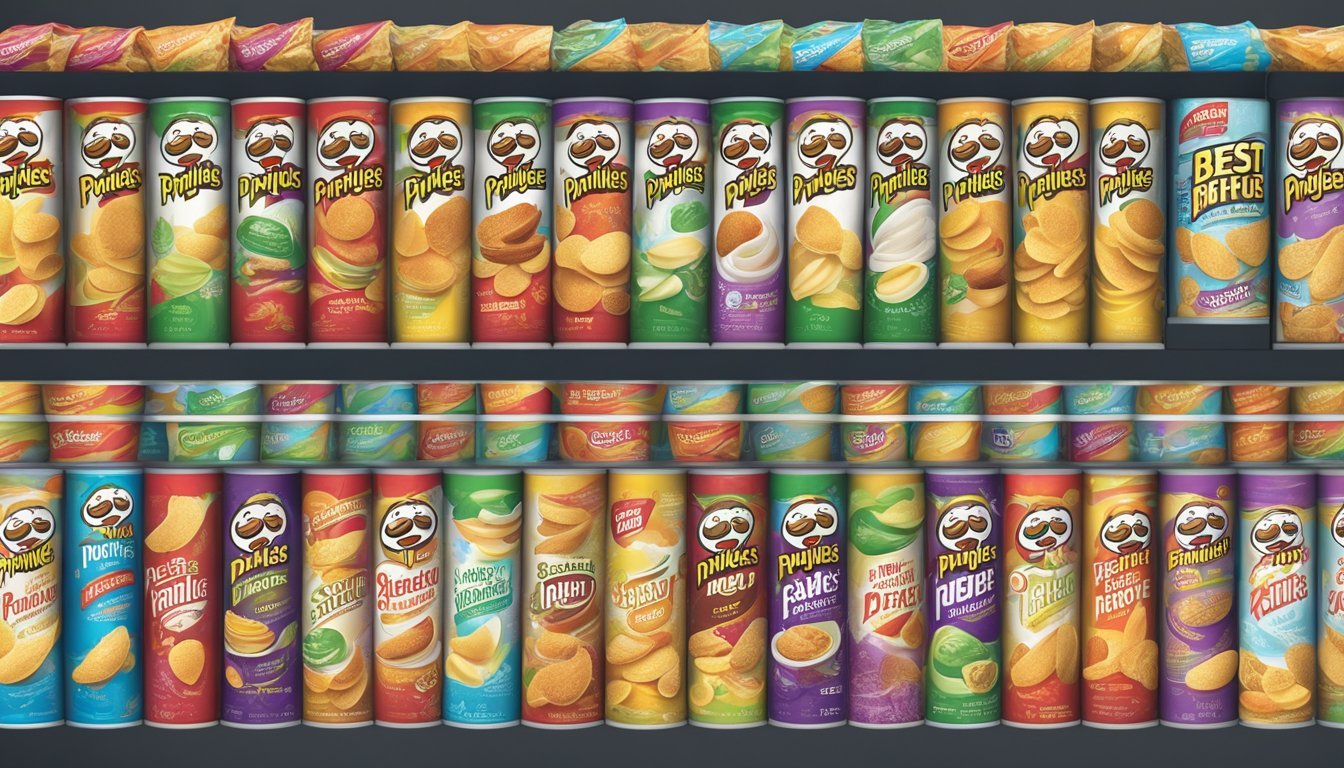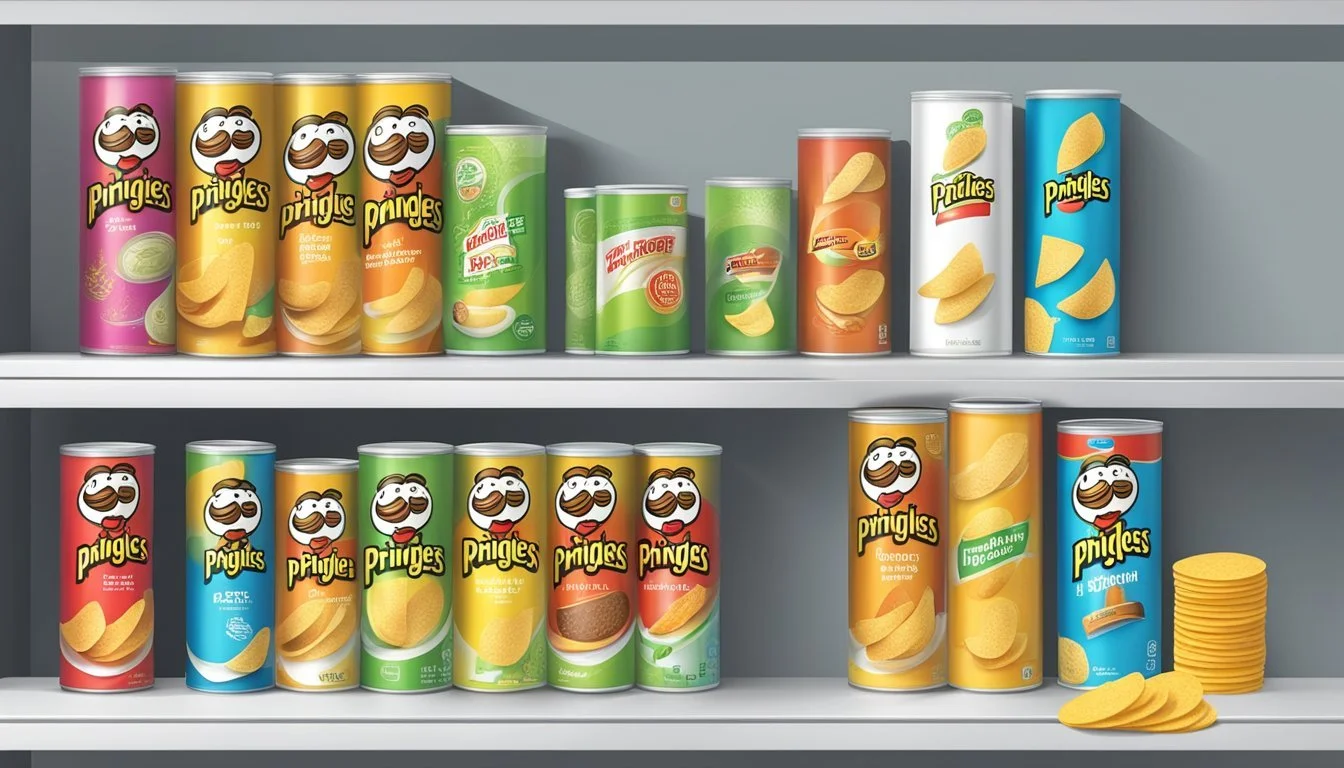Do Pringles Expire?
Unveiling the Shelf Life of Pringles
When it comes to snacks, few are as globally recognizable as Pringles. With their signature pop sound upon opening and their stackable crisps, these potato chips have become a pantry staple in homes around the world. But a common question many consumers ask is: Do Pringles expire? Like all foods, even Pringles chips have a shelf life, though their extended shelf life often surprises people. Let’s take a closer look at how long Pringles last, what affects their freshness, and how to properly store them to maintain quality and flavor.
Do Pringles Expire?
Technically, yes — Pringles do expire. However, because of their unique production process and packaging, they tend to last much longer than regular fried potato chips. Unlike traditional chips that come in a bag, Pringles are baked, not fried, and stored in a sturdy can with a tight seal and lid. This design helps protect the chips inside from air, moisture, and sunlight, which are the main culprits behind stale or soft snacks.
When you check the date printed on the can, you’ll usually see a “best before” or “sell by” date rather than a strict expiration date. This means that while Pringles may lose some crunch or flavor after this period, they don’t necessarily become unsafe to eat right away.
Potato Chips: What Makes Pringles Different
To understand why Pringles last so long, it helps to compare them to regular potato chips. Traditional chips are typically fried in oil and packaged in a bag filled with air. Over time, that air can cause the chips to lose crispness and absorb moisture, especially in humid environments.
Pringles, on the other hand, are made from a uniform dough of potatoes, rice, and wheat, which is then baked into perfectly shaped crisps. The packaging is also a major factor. Each can is filled with nitrogen, not regular air, to prevent oxidation and keep the chips fresh for an extended shelf life. The seal and lid act as a protective cover, ensuring that the chips remain crunchy until opening.
Shelf Life of Pringles
The shelf life of Pringles generally ranges between 12 to 15 months from the production date. This period can vary slightly depending on the flavor (for example, sour cream and onion varieties may have slightly shorter lifespans due to their seasoning).
If stored properly, unopened cans of Pringles can remain fresh for months past the printed date. The key is to keep them in a cool, dark place—like a pantry or kitchen cabinet—away from heat, sunlight, and moisture. These factors can accelerate the breakdown of oils and cause the chips to become stale or bad more quickly.
Once the can is opened, however, the countdown begins. The chips inside are now exposed to air and humidity, which can make them soft within one to two weeks. To maintain their freshness, always cover the opened can tightly with the plastic lid and store it in a cool, dark place.
How to Identify Expired Pringles
If you’re unsure whether your Pringles have passed their prime, there are a few sensory cues you can use to identify expired or stale chips:
Smell: Fresh Pringles have a mild, pleasant aroma. If they smell bad, rancid, or “off,” it’s a sign that the oils have degraded.
Taste: Expired Pringles may taste stale, soft, or lack their signature flavor.
Texture: The crunch is one of the defining features of Pringles. If they feel soft or chewy, they’ve likely absorbed moisture.
Appearance: Check for any visible discoloration or clumping of seasoning—both can indicate that the chips are no longer fresh.
If your review of the chips shows any of these signs, it’s best not to consume them. While eating expired Pringles is potentially not dangerous, the taste and quality will be far from ideal.
Expiration Date: What It Really Means
The expiration date or best before date on a Pringles can is not a strict indicator of safety but rather a guideline for optimal freshness. Foods like Pringles can often be eaten weeks past the date as long as they’ve been stored properly.
However, the environment plays a big role. If the can has been kept in a humid or hot site, such as near a stove or under sunlight, the chips may lose their flavor and crunch much sooner. On the other hand, if you’ve kept them in a cool, dark place, they might still taste fresh even weeks after the date has passed.
It’s also worth noting that Pringles are baked, not fried, which contributes to their extended shelf life. The reduced oil content means they’re less prone to oxidation — the process that causes fried chips to go bad faster.
Opened Can: How Long Do Pringles Last After Opening?
Once you’ve popped the lid, the life of your Pringles begins to depend on how well you store them. An opened can can stay fresh for about one to two weeks if stored properly. The main goal is to limit exposure to air and moisture.
Here are a few tips to keep your opened can of Pringles at its best:
Reseal tightly: Always snap the lid back on after each use.
Store in a cool, dark place: Keep the can away from heat and sunlight.
Avoid humid environments: Moisture is the enemy of crispness.
Don’t leave the can open: Even leaving it uncovered for a few hours can make the chips soft.
If you notice the chips have become stale, you can try lightly baking them in the oven for a few minutes to restore some crunch—though the flavor may not be quite the same.
Health Risks of Eating Expired Pringles
While eating expired Pringles is unlikely to cause serious health risks, it’s still best to be cautious. The oils and seasonings can degrade over time, producing off-flavors and potentially irritating your stomach. If the chips smell bad or taste unpleasant, it’s safer to discard them.
Remember: just because Pringles don’t look spoiled doesn’t mean they’re still good to eat. Always review the date, smell, and taste before consuming weeks past the expiration date.
Final Thoughts
So, do Pringles expire? Yes — but thanks to their unique production process and smart packaging, they have an impressively extended shelf life compared to other potato chips. When stored properly, unopened cans can last well beyond their printed date, and even an opened can can stay fresh for one to two weeks.
The key takeaway? Keep your Pringles in a cool, dark place, away from heat and moisture, and always reseal the lid after opening. That way, you can continue to enjoy the iconic crunch and flavor that make Pringles one of the most beloved snacks around the world.
And remember — while the “once you pop, you can’t stop” slogan might be a joke, it’s also a reminder that freshness is best enjoyed sooner rather than later!








